Please include attribution to North Shore Pediatric Therapy with this graphic.
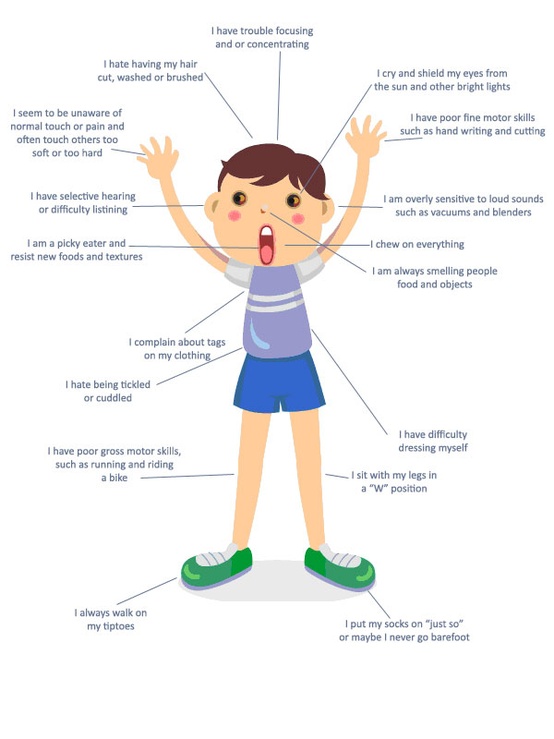
Serves the psychiatric patient, families, friends and the psychiatrists

Low back pain is the second most common cause of disability in the U.S. Over 80% of people will experience an episode of this pain at some point in their lives. Themost common reasons for low back pain are disc injuries, sciatica, lifting heavy objects, or some other non-specific back injury.
Yet even though back pain is incredibly common, not all people respond in the same way to this often-disabling condition. In fact, even if two people have the same level of pain, their responses to that pain can be very different. These differing responses are due in part to different people’s psychological attitudes and outlooks.
Even when you have low back pain that is being medically treated, it helps to understand the psychological factors that impact your pain — and your brain. It also helps to know what you can do about this.
When your physical movement is limited, this can cause psychological distress, and the psychological distress can, in return, worsen the pain. Your personal health beliefs and coping strategies can influence both your level of distress and course of the pain. For instance, if you are anxiety-prone, expect the worst, and have catastrophic thinking, this can make the pain far worse. That’s because those psychological vulnerabilities can change your brain and intensify the pain.
Often, if you have these pre-existing psychological attitudes, you also have abnormalities in the regulation of your brain’s chemistry (particularly dopamine), and the usual brain functions inemotional control, anxiety, and attention are also disrupted. As a result, you can’t control your distress; your become anxious; you expect the worst; and you can’t focus on anything else. The pain becomes all-consuming.
But it’s not just pre-existing attitudes that worsen back pain. The pain itself can rewire your brain. When pain first occurs, it impacts your pain-sensitivity brain circuits. But when pain lasts, the related brain activity switches away from the “pain” circuits to circuits that process emotions. That’s why emotions like anxiety often take center stage in chronic back pain. And it’s why emotional control becomes that much more difficult.
Fortunately, some psychological therapies can be really helpful with back pain. They help lessen pre-existing psychological vulnerabilities, change how you perceive the pain, and also alleviate the psychological factors (such as anxiety and anticipation) that maintain your pain.
The treatment with the greatest supporting evidence (for all chronic pain syndromes, not just back pain) is mindfulness. A recent study demonstrated that a technique called mindfulness-based stress reduction (MBSR) can help to reduce back pain and also improve emotional control by increasing brain blood flow to the frontal lobe. A full eight-week course in this technique may even improve anxiety and depressive symptoms as well. Practicing mindfulness involves activating a brain relaxation pathway by deliberately ignoring mental “chatter” and focusing on your breathing. When you do this, an “unfocus” circuit, called the default mode network, is activated. However, in some chronic pain patients, this circuit is disrupted. In these cases, MBSR may not work.
There are other forms of psychological treatment that can be helpful as well. Cognitive behavioral therapy (CBT) can be especially helpful. You can attend group or individual sessions either in person or via computer. Even a single episode of back pain can benefit from psychological treatments. CBT can also prevent an acute injury from progressing to chronic back pain.
Hypnosis may help relieve the pain as well. CBT and hypnosis have weaker evidence to support their effectiveness for back pain than MBSR does, but they are worth trying if MBSR fails.
Depending on the cause, low back pain can be treated with progressive muscle relaxation too. This is a technique in which you learn how to decrease your anxiety by becoming more aware of how you can tense and then relax your body.
And there is also some evidence that combining psychiatric medication with psychotherapies may be more helpful than either treatment alone.
So while it’s clear that low back pain can be “in your head,” that doesn’t mean that you have to trivialize it. In this day and age, “mind over matter” makes little sense. “Mind” includes “matter,” especially when you consider that the physical “matter” of the brain plays a major role in mindset changes. This is especially true when it comes to the brain-based changes related to low back pain. To that extent, changing your mindset and brain biology can help your brain — and lessen your pain.
ref:
http://www.health.harvard.edu/blog/psychology-low-back-pain-201604259537?utm_source=delivra&utm_medium=email&utm_campaign=BF20160425-Pain&mid=10989554&ml=131377

Find more education infographics on e-Learning Infographics

Find more education infographics on e-Learning Infographics

Find more education infographics on e-Learning Infographics

Find more education infographics on e-Learning Infographics
An online learning community is the backbone of any successful eLearning program. It gives your learners an online platform to share their thoughts, questions, and concerns, and to receive the feedback they need to achieve their goals. However, in order to cultivate a strong corporate learning culture, it’s imperative to support your online learning communities on a continual basis. This can be challenging, as you must allow them to speak their mind and share their opinions, while still ensuring that everyone’s voice is being heard and respected. Fortunately, there are 7 tips that can help you maintain a thriving online learning community.
Supporting your online learning communities should be an ongoing practice, as this will ensure that your learners have a solid online platform to share their ideas and address their concerns. So, try to set aside time each day, if possible, to focus on cultivating your online learning community, welcoming new members, and sparking meaningful online discussions.
Are you interested in creating a community of practice for your corporate learners? Read the article Top 10 Tips To Create a Corporate Learning Community of Practice to learn how to improve performance and encourage collaboration within your organization
Electronic learning, popularly called eLearning, is one of the most popular forms of training for most corporate organizations. The eLearning course design and development is a massive task that needs to be planned and managed carefully while following all the formal practices that are a part of the project management lifecycle.
In this article, we will list the 16 essential steps of eLearning course design that you could follow while you are starting on a new eLearning project:
Conduct a thorough research.
Once you are aware of the training topic, ask the customer to introduce you to the Subject Matter Expert (SME) who will guide you with the content. If the new training is supposed to be based on an existing training, find out how that training is taking place now. Try and keep the new course in tune with the existing one, but allow room for further improvements or refinements. How would you make the topics more engaging to the learners? Make sure to mark the content that needs to be taught through different interactivities. What technical resources are available to the customer? Does your customer need Web based training or Computer based training? Does your customer already have a Leaning Management System (LMS)? If yes, what type of Leaning Management System do they have? Which are the course authoring tools that could be integrated easily? Ensure that you handle all compliance, Section 508, and SCORM issues here.
Analyse the target audience and determine the instructional requirements.
Once you have analyzed the profile of the target audience, you need to determine how you would impart instruction to the learners. Simultaneously, you also need to discuss what are the needs and expectations of the organization from this course.
Create a design for the course.
As the next important step, find out what are the prerequisites for this training. Also, decide on the learning objectives and assessment parameters as discussed with the Subject Matter Expert.
Create a prototype for the course.
You can use tools like Visio to build a quick prototype, which would give an idea of what the final course would look like. This prototype would include a partial script along with the look and feel and sound treatment for the same.
Test the prototype with a few sample learners.
Invite a few learners from the customer’s end and test if the prototype has been designed as per the expectations communicated initially.
Write the script or the storyboard.
You can use notes or other papers to create interactive storyboards or scripts as well as branching scenarios with the content provided by the Subject Matter Experts.
Produce relevant media.
You can create the necessary graphics; shoot photos, record videos and music with sound effects at this point. In case you don’t have the necessary equipment, then consider taking the help of professional vendors.
Assemble all the course elements in the course authoring tool.
Assemble various media elements in the form of jpg, wmv, mp3, etc., in the course authoring tool.
Review the adherence of the course to the learning objectives.
Now you need to review if the course has been designed as per the learning objectives and other pre-determined standards like the quality of media, grammatical errors and typos, software glitches, and bugs.
Write the course manual.
You need to write a manual for the course administrator and one for the system administrator to describe the administration and purpose of the eLearning from both IT and training perspective.
Perform Beta review of the eLearning.
Get your draft course reviewed by the customer. This will give you an idea how far or how near are you from successfully accomplishing your project.
Make final corrections to the course.
Based on the feedback provided by your customer, implement the necessary changes and corrections.
Test the pilot course in the customer’s system.
This is when you will be required to bring the completed course to the customer’s location and get it tested by their IT department in order to ensure successful installation and testing. Also, configure the course properly and check if all the functionalities are working properly in order to be readily deployed across the organization.
Train the trainer and IT staff of the customer.
Training the facilitator and the IT staff at the customer’s end is absolutely necessary. They also need to be trained on the Learning Management System for learners to be able to collaborate successfully.
Roll out and advertise the eLearning.
Roll out the training program and market it well to create awareness. Make a note of any issue and integrate it into the eLearning.
Evaluate the course and measure the return on investment.
Use the available metrics and data to measure the success of the training program. In case you need to determine the return on investment of the training, use survey forms. Once you have reviewed the feedback and issues, start working on the next version of the eLearning.

Find more education infographics on e-Learning Infographics
People who have a diagnosis of schizophrenia at times experience the symptoms of psychosis – delusions, hallucinations and muddled thinking. Mental health professionals describe these as the ‘positive symptoms’ of schizophrenia.
When people experience these symptoms, they are said to be having an ‘episode’ of psychosis. During an episode, people often do not feel unwell and do not think they have a mental health problem (mental health professionals call this ‘lack of insight’). As a result, people who are experiencing the symptoms of psychosis may not want to ask for help or treatment.
Between episodes, people who have a diagnosis of schizophrenia often experience what mental health professionals call ‘negative symptoms’ and ‘cognitive symptoms’. People may have little energy and lose the motivation to do anything; they may lose interest in friends, family members and activities they previously enjoyed. They may no longer care about their personal appearance and become socially isolated. They may experience memory problems and find it very hard to concentrate. It may be difficult to get up in the morning, let alone return to work or study,
In addition, people who have a diagnosis of schizophrenia often experience depression and can become very anxious.
The experiences and symptoms each person has will differ and last for different periods of time. Some people have just one episode of psychosis and are unwell for only a short period. Others go on to experience a number of episodes over a longer period of time. Some people will experience negative and cognitive symptoms in between episodes, or after a single episode, for months, or even years.
People can develop schizophrenia at any age, but commonly men first become unwell in their late teens or early 20s. Women tend to develop schizophrenia when they are slightly older, in their late 20s. A small number of people develop schizophrenia in middle age or when they are older.
Anyone can get schizophrenia, though children of a parent who has the illness are slightly more likely to become unwell. Even though genes play a part in the development of schizophrenia, there is no single cause and there are many contributing factors (see What causes psychosis? page). Just because one person in the family has schizophrenia doesn’t mean that other family members will inevitably develop the illness.
A review of research carried out between 1950 and 2009 in England showed that in each year, about 4 in every 1,000 people had a mental illness involving the symptoms of psychosis. Schizophrenia is the most common of this type of serious mental illness.
Sometimes schizophrenia starts suddenly with an acute, and often frightening, episode of psychosis.
However, a first episode of psychosis is often preceded by what health professionals call a ‘prodromal period’ when people’s behaviour begins to change.
During this period, people are often depressed or anxious; they may find it difficult to concentrate or have problems remembering things. They may stop seeing their friends, act in a strange and uncharacteristic way, be less interested in study, work or hobbies, and care less about how they look. They may become socially withdrawn and spend much more time alone.
They also sometimes have experiences resembling the symptoms of psychosis – hearing voices every now and then, being occasionally suspicious and paranoid for example (seeParanoia page). However, not everyone who has these sorts of experiences will go on to have a first episode of psychosis (seePsychotic-like experiences page).
A large proportion of people who experience psychosis for the first time will get better with treatment (see below). Others will improve but may go on to have further episodes, or continue to experience negative or cognitive symptoms.
Research has shown that the earlier treatment is given for the symptoms of psychosis, the better people recover. People who don’t access mental health services when they first experience symptoms may get better slower, or be less likely to get completely better, and have an increased risk of relapse in the future (see Early intervention services page).
When people first become unwell, it may not always be clear if they have schizophrenia or another serious mental illness that involves the symptoms of psychosis, such as bipolar disorder or schizoaffective disorder. Therefore, a diagnosis will not necessarily be given after a first episode of psychosis.
It is also not unusual for a diagnosis to change. Different diagnoses are given in response to symptoms an individual has at any particular time (see Mental health diagnoses page).
There are different ‘sub-types’ of schizophrenia, determined by the most prominent symptoms. The most common sub-type diagnosis is ‘paranoid schizophrenia’: if someone is given this diagnosis, it means the symptoms they experience most are delusions and paranoia. Other sub-types of schizophrenia are rarely diagnosed.
There are two guides used by psychiatrists to help them make a diagnosis. One is called the International Classification of Diseases (ICD): it includes a special chapter on psychiatric illness and is published by the World Health Organisation (see Mental health diagnoses page). The section on ‘Schizophrenia, schizotypal and delusional disorders’ describes sub-type diagnoses.
The other guide is the Diagnostic and Statistical Manual of Mental Disorder (DSM) and is published by the American Psychiatric Association. A new updated version of the DSM was published in May 2013 (called DSM-5 because it is the fifth update) and abolished all the sub-types of schizophrenia it had described in previous iterations.
The quicker people who are experiencing an episode of psychosis receive treatment, the more likely they are to recover.
The 2014 National Institute for Health and Care Excellence (NICE) clinical guideline about the treatment of schizophrenia* recommends all people experiencing a first episode of psychosis be assessed straightaway and offered treatment and support by an early intervention team.
Someone who is experiencing another episode of psychosis may be offered treatment and support from a different type of specialist mental health team – a crisis resolution/home treatment team, for example (see Mental health services page).
Sometimes people who are experiencing the symptoms of psychosis may need to be admitted to hospital for treatment (see Psychiatric wards and Mental Health Act pages).
Treatment for the ‘positive’ symptoms of schizophrenia consists of antipsychotic medication (see Antipsychotic medication page) that can diminish them, and sometimes make them go away completely. NICE recommends people be given a physical health check before they starting take antipsychotics and that potential side effects of a particular type of medication are discussed. People should start off on low doses (that can be increased if necessary) and have their general health monitored for the first three months.
Antipsychotic drugs don’t work for some people. Mental health professionals call their illness ‘treatment-resistant’, or ‘refractory’ schizophrenia.
NICE recommends that the antipsychotic clozapine be prescribed when people have not responded to two different types of medication – clozapine can suppress the symptoms of psychosis in people who have not got better after taking other antipsychotics. People who are prescribed clozapine must have regular blood tests and be monitored because this particular drug can damage white blood cells.
After an episode of psychosis, people will be encouraged to take antipsychotic medication for some time. If they stop taking the drugs too soon, the symptoms of psychosis may return. Some people will continue to take antipsychotics for many years – even for life – but this not the case for everyone who is given a diagnosis of schizophrenia. People should talk to the mental health professional who is offering them support before stopping antipsychotics, and come off them gradually.
There is currently no medication that effectively treats the negative and cognitive symptoms of psychosis – lack of attention and motivation, apathy, slow thinking, memory problems and difficulties interacting with other people and everyday situations. Cognitive behaviour therapy for psychosis has been proven to help improve these symptoms and other talking therapies are being developed and tested (see Other treatments page).
NICE recommends people given a diagnosis of schizophrenia be offered cognitive behaviour therapy for psychosis and family therapy, and that mental health professionals should also consider offering arts therapies. However, these therapies are not available everywhere.
If people with schizophrenia experience depression and anxiety, they may also be prescribed antidepressants or medication that tackles anxiety. Sometimes people end up taking a large number of different drugs for different symptoms – or to counteract side effects of antipsychotics (see Antipsychotic medication page).
Family members and carers should be involved in planning care and support unless an individual does not want this to happen.
When someone has recovered from an episode of psychosis, they may continue to be offered support from an early intervention team or another type of community-based team, or their GP can take over. If someone becomes unwell again, however, a GP should not prescribe antipsychotics – they should refer them back to specialist mental health services.
* Psychosis and schizophrenia in adults, NICE clinical guideline 178, published February 2014.
NICE also says that mental health professionals should consider offering ‘peer support’ from someone who has experienced the symptoms of psychosis, or has a diagnosis of schizophrenia, and who has trained to be a peer support worker. Alternatively, NICE says mental health professionals should consider offering a place on a ‘self-management programme’ led by a health or social care professional. Both peer support and self management aim to help people understand more about their symptoms and diagnosis, about their medication and treatment, about recovery and staying well and about what to do in a crisis.
People who have a diagnosis of schizophrenia are more likely to develop physical health problems, including weight gain, high blood pressure, heart disease and diabetes.
These problems are caused by changes in lifestyle as a result of the symptoms of the illness – research has shown that people who have a diagnosis of schizophrenia or another serious mental health condition tend to look after themselves less well, are more likely to smoke, and less likely to eat healthy food and take regular exercise.
Long-term use of antipsychotic medication can also lead to weight gain and increase the risk of cardiovascular disease and diabetes.
Research has shown that these physical health problems contribute to premature death: people who have a serious mental health problem like schizophrenia have shorter lives compared to the national average (some early deaths are because of suicide).
NICE says people should receive a health check before they start on antipsychotic medication, and be monitored for physical changes during the first three months of the new regime.
GPs should check the physical health of people who have a diagnosis of schizophrenia once a year, including their weight, blood pressure, blood sugar and cholesterol levels. People should be given treatment for any physical health problems and encouraged to raise any such problems with their GP.
People should also be offered advice about healthy eating and exercise, and help to stop smoking.
The charity Rethink Mental Illness has developed a ‘Physical Health Check’ designed to help mental health professionals make sure the physical health needs of people they support are addressed. Mental health professionals, family members and people with experience of schizophrenia can download the questionnaire free of charge from the Rethink Mental Illnesswebsite.
Some researchers and people with personal experience of schizophrenia think that the name of the illness should be changed.
Those in favour of a new name say ‘schizophrenia’ is associated with discriminatory attitudes and stigma. They say the word, first used a century ago when nothing was known about the illness apart from its symptoms, is unsuitable because of today’s greater scientific understanding of factors that contribute to its development.
The Japanese Society of Psychiatry and Neurology introduced a change in terminology in 2002: the name of the illness is now ‘Togo ShitchoSho’ (integration disorder). It was previously ‘SeishinBunretsuByo’ (mind split disease). The change was made ‘to avoid stigma and better express the complexity of the disorder,’ said the Society’s president Masatoshi Takeda (July 2012).
A professor of psychiatry at Maastricht University in The Netherlands (Jim van Os) has suggested ‘salience syndrome’ may be an appropriate replacement for schizophrenia.
Members of the Dutch organisation Anoiksis, who have personal experience of schizophrenia, have suggested the term ‘psychosis susceptibility syndrome’, or PSS, and are now campaigning for its adoption.
What is psychotic depression?
Some people who have severe clinical depression (sometimes called major depressive disorder) experience hallucinations and delusions. They are said to have psychotic depression.
People who have severe clinical depression are in a depressed mood most of the day, practically every day, and can lose interest in almost everything.
Mental health professionals call this sort of depression ‘unipolar’ depression in contrast to ‘bipolar disorder’, when people experience both episodes of depression and episodes of mania.
Other symptoms of severe clinical depression include extreme tiredness, disturbed sleep patterns and changes in appetite. People feel worthless and guilty, they are unable to concentrate and are indecisive. Many people also become very anxious, pre-occupied, or overly concerned about their health. When people are severely clinically depressed, their daily life becomes extremely difficult.
The delusions and hallucinations experienced by people with psychotic depression almost always reflect their deeply depressed mood. The delusions and hallucinations are very negative, self-critical, self-punishing and self-blaming, and can make people feel even more anxious.
People with psychotic depression may also experience ‘psychomotor agitation’ – an inability to relax or sit still. They may rock, fidget, or move their legs a lot, for example. Being acutely and severely anxious, often as a result of the symptoms of psychosis, contributes to the psychomotor disturbance.
Unipolar depression tends to be episodic, and studies have shown that the majority of people who have had a first episode of severe clinical depression will go on to have at least one more. After a second and third episode, the risk of relapse increases substantially.
Back to top
Who gets psychotic depression?
The estimated numbers of people who are likely to experience severe clinical depression at some time in their lives vary between three and 11 people in every 100. Women are twice as likely than men to develop depression – so two-thirds of people who have severe clinical depression will be women.
Not everyone who has severe clinical depression will experience the symptoms of psychosis. An estimated 10 to 15 per cent of people diagnosed with severe unipolar depression will at some stage go on to develop the symptoms of psychosis.
Researchers do not know why some people do, and others don’t develop hallucinations and delusions. They are therefore unable to predict which people who have unipolar depression will experience the symptoms of psychosis.
Back to top
Diagnosis
The classification systems used by mental health professionals to make a diagnosis describe ‘psychotic depression’ as a sub-type of major depressive disorder.
Doctors therefore use the criteria for ‘major depressive disorder’ or ‘severe depressive episode’ with additional symptoms of hallucinations and delusions.
Mental health professionals will make a diagnosis by asking in detail about the symptoms people may be experiencing. They will also find out about an individual’s past experience of depression, and whether family members have ever experienced depression or psychotic depression.
It may, however, be difficult to make a diagnosis. The symptoms of psychosis may be subtle, and people with depression may sometimes not report that they are experiencing hallucinations and delusions because they are embarrassed by them. There is a danger too of misdiagnosis – If people are experiencing psychomotor agitation, for example, their symptoms could be attributed to severe anxiety.
It is important for mental health professionals to work out if people are experiencing the symptoms of psychosis as part of unipolar depression, or as part of bipolar disorder (see Bipolar disorder page). This is because there are different treatments for psychotic depression and bipolar disorder.
Back to top
What causes psychotic depression?
Researchers don’t know why some people who have unipolar depression develop the symptoms of psychosis, but they think genes may have a part to play.
Research studies have shown that unipolar depression, particularly severe depression, runs in families. People are much more likely to develop depression if they have a first degree relative (mother, father or sibling) who has experienced unipolar depression. Researchers have also found that people are more likely to develop depression if they have experienced adversity in childhood.
They have identified genes that make people more likely to develop depression, and they have identified genes that play some sort of a role in the symptoms of psychosis. Some researchers think it may be that a person who inherits a combination of these genes may be more likely to develop psychotic depression. However, they do not yet understand how many genes are involved and how they interplay. One theory is that there is a set of genes that contribute to the development of psychosis, and some individual genes that determine whether people go on to develop bipolar disorder, schizophrenia or unipolar depression.
Researchers also think high levels of the stress hormone cortisol may be involved in some way. High cortisol levels are found in people with depression and people with other mental health problems.
Some researchers think that the content of hallucinations, particularly voices, experienced by people with psychotic depression may be associated with traumatic events in the recent or distant past.
Back to top
How is psychotic depression treated?
People who have severe, clinical depression and experience hallucinations and delusions should be referred to a specialist mental health service. Some people may need hospital treatment: there are not many specialist units in the country, so this may be on a general psychiatric ward. Alternatively, they may be under the care of a community-based home treatment team.
The treatment will initially concentrate on the depression, rather than the symptoms of psychosis. People will normally already be taking medication for severe depression – antidepressants, or a combination of drugs, which may include antidepressants, mood stabilisers and drugs that counter anxiety (anxiolytics). The National Institute for Health and Care Excellence (NICE) recommends that in addition to medication, psychological therapies should be part of a package of treatment for severe clinical depression.
When delusions and hallucinations develop, mental health professionals may also prescribe an antipsychotic drug. However, there hasn’t been much research into what is the best combination of medication for psychotic depression.
The NICE guidance on the treatment and management of depression in adults says mental health professionals should consider prescribing antipsychotic medication, though it also acknowledges there is not much evidence available about the best type or dose.
Psychotic depression is one of the few illnesses where ECT (electroconvulsive therapy) may still be used as a treatment. The NICE guidance on depression says ECT should be used to treat the symptoms of profound depression, not the symptoms of psychosis, and should only be used if urgent treatment is needed, or if other treatments have not helped the depression. ECT (when an electric current is passed through the brain) is always given in hospital, and under general anaesthetic. Health professionals should explain how ECT works, and the potential side effects – people may experience a loss of memory, for example. People have to give their consent before ECT is administered.
Other treatments for severe clinical depression are currently being developed and tested. These include rTMS – repetitive transcranial magnetic stimulation. This involves putting an electromagnet on the scalp to produce magnetic pulses that stimulate a small part of the brain to reduce its activity. People are conscious throughout the procedure and no anaesthetic is needed. NICE does not recommend rTMS for the treatment of depression because there is not yet sufficient evidence to prove it is effective.
Other researchers are trialling drugs that may reduce cortisol levels, and some studies are looking at the effectiveness of ‘vagus nerve stimulation’, where an electrode is placed in the brain to constantly stimulate and regulate electrical activity.
While depressed adults often talk about emotional pain, depressed teens tend to report physical aches and pains. They may report headaches, stomach problems or say they just don’t feel well. Physical exams however, won’t reveal any findings.
Adults usually describe feeling sad when they’re depressed, but teenagers often become increasingly irritable. They may behave disrespectfully or may have less patience than usual.
They also may become defiant.
Teens may experience a sharp decline in their grades when depression strikes. But, that’s not always the case. Some teens maintain a high grade point average even in the midst of emotional turmoil.
In fact, sometimes the pressure to maintain good grades becomes a factor in depression. A teen who feels the need to get accepted into an Ivy League college, or one insists a disappointing SAT score could ruin her life, may remain driven to achieve despite being depressed.
Depression can lead to an intense sensitivity to criticism. Sometimes teens deal with this increased sensitivity by avoiding activities where they fear failure . A teen may refuse to try out for the soccer team or may refuse to invite a date to a dance in an attempt to avoid rejection.
At other times, teens may deal with this fear by becoming an overachiever. A depressed teen may become a perfectionist in an attempt to avoid the risk of being rejected.
It’s important to monitor how your teen responds to risk, criticism and failure as changes in your teen’s behavior could signal your teen is depressed.
Social isolation is a common problem for everyone with depression, but teens don’t necessarily withdraw from everyone when they become depressed. Sometimes they simply change peer groups. A teen may stop talking to certain friends or family members.
At other times, teens withdraw from real-life activities and focus their attention on the online world when they’re feeling depressed. A depressed teen may create an online persona and may engage in online chats or play role playing games for hours on end to escape the realities of life.
Mood swings during adolescence are partially due to biology. Hormonal shifts that occur during puberty play a major role in the way teens think and feel. As teens mature, they commonly experience increased irritability, intense sadness, and frequent frustration due to the chemical changes occurring inside their brains.
Teens’ quests to establish their own identities also plays a role in their moods. It’s healthy for teens to gain independence and to establish their own beliefs, goals, and guidelines, which are separate from their parents
Nobody said that raising an adolescent was easy, and schooling one is even more of a challenge! Parents are taking on a lot of school responsibility, and let’s face it — things are different than they used to be. How are parents supposed to know how to handle the homework load without some guidance?
Take studying, for example. If you parent a struggling or resistant learner, you’ve probably heard more than one person suggest, “She just needs to study more.” Most kids think this means filling in a study guide or rereading a chapter. But many don’t learn by writing or reading. Their strengths lie in the visual, kinesthetic, musical, or social realm. How, then, are we to help our children develop their studying skills?
The task does not have to be daunting. In fact, it can actually be simple and effective!
Getting Started
Determine when tests will happen.
Use school websites, email, planners, etc. to help you and your adolescent pinpoint an effective way to get tests on the calendar.
Set a goal.
Work with your student to determine how many days of studying he needs, and make a session-minute goal (one minute per grade level) and a target for him to study twice daily. An eighth-grade student will set the timer for eight minutes each session, a tenth-grade student for ten minutes, and so on.
Determine the study material.
Notes, study guides, worksheets, or quizzes from the chapter or unit are all good choices. Textbooks are easily accessible, but study material from them may be difficult to identify.
Ask and answer.
Have your adolescent ask and answer her own questions, or for those of you with social students, you can join in and ask the questions. If she gets through the material before the time is up, start over!
Do it again.
Set aside the same time increment before bed, and repeat the entire exercise.
If you do the math, a sixth-grade student will study twelve minutes every day for five days, and will have put 60 minutes of no-tears studying into his pocket!
Minute-by-Minute Study Strategies
But is the question-answer strategy really the best way to study? No single way works for everybody, as each child has a different set of strengths and preferences when it comes to internalizing information. Here are some other ways to use this time (also provided as a downloadable PDF to print for your students):
1. Flashcards

Turn those questions and answers into flashcards and have your adolescent quiz herself. The simple act of flipping the cards around and putting them into piles of “mastered” and “needs practice” may be enough to keep an active kid moving. Some kids are motivated by timing themselves. Flip those flashcards around, have her read the answer, and try to reproduce the question for a bigger challenge.
2. Categorizing



Use the flashcards to organize the information by categories, put them in some kind of order, or match them up in pairs. The idea is to organize them differently each time so that your student can make more than one connection in his brain for the information.
3. Word combining
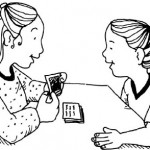
Language lovers won’t mind creating sentences with vocabulary. If the test is vocabulary-heavy, start by either writing or speaking the sentences with one word in each and then moving to two words, then three, etc.
4. Song lyrics
Ask a musical or rhythmic adolescent to take the lyrics of her favorite song and rewrite it to include as much of the required information she can. This may take multiple sessions to accomplish, but once it’s done, she can sing it over and over again.
5. Picture notes
During the study session, have a more visual adolescent draw pictures of his notes on flashcards, paper, or a whiteboard, and then describe them.
6. Talk-through
Many adolescents are highly social. If yours is, too, have her go through flashcards or a study guide and explain each aspect in as much detail as possible without reading from the printed information.
7. Picture walk
Have him use the visuals provided in the textbook, online text, worksheets, notes, etc. to explain information either out loud or in writing, depending on his preference.
8. Mnemonic devices
Have her rhyme or create sayings to help her remember information. Creating acronyms or sentences with the first letters of words can also be fun for students who like to play with language.
9. Oral visualization
Read a portion of the notes or worksheet and have your student describe what comes to mind visually.
10. Perspective talk
Talk or write about the material, pretending to be somebody or something else.
11. Superhero letter
Have a word-smart adolescent write a letter to a superhero explaining the material and why the information should be important.
Ultimately, studying comes in dozens of forms, and it’s important to help your adolescent figure out what’s going to work for him or her. Whatever her strengths, whatever his level of comfort, start there. Keep it short. Keep it simple. Keep it painless. And watch what happens when studying becomes a familiar routine — and when students see the fruits of their efforts.
لماذا انزعج المشير #السيسي من الألتراس ؟!لقطات قديمة تظهر تجمع الألتراس قبل دخول الاستاد في مارس الماضي
Posted by عبدالعزيز مجاهد on Tuesday, February 2, 2016
شاهد .. ملعب التيتش فى احياء #مجزره_بورسعيدوهتافات الجماهير التى اغضبت مجلس الادارة والحكومة – تفاعل اهالى الضحايا مع الهتافات مصحوبة بالبكاء والصراخ
Posted by Muhamed Abou Alia on Tuesday, February 2, 2016
تعالى نكتب العلاج

اتعود تشد القامة و تكون وقفتك مشدودة
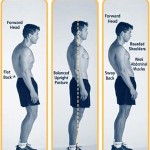
والمشي كمان صح .. مفرود

اتعود تشيل صح
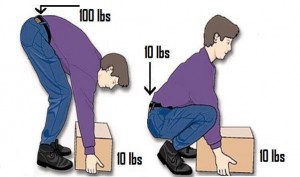
اتعود تجلس صح
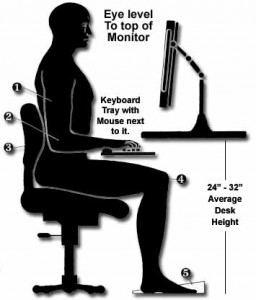
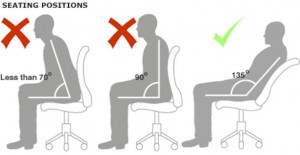

في الجلسات الطويلة ارجع للوراء ..كالطائرة و العمل
احترس من السقوط
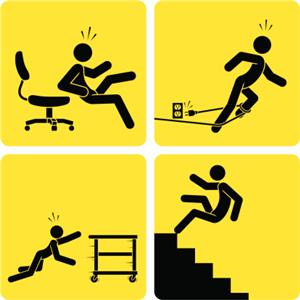
ممكن تنام كده الألم هيقل جدا
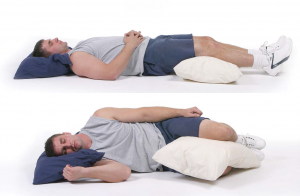
اعمل تمارين للضهر


و للتوازن ..هتشد عضلات الضهر



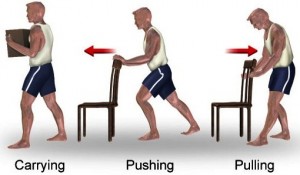
نقص وزنك شويه
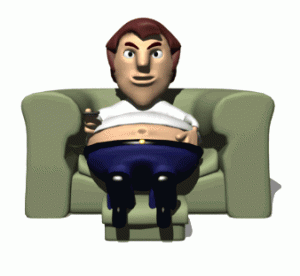
ارتدى حزام الضهر بدعامات


Just weight control can save you from stroke , new studies confirm.
How to do this, here are simple steps you can adopt.

Move more.
Exercise is one obvious way to burn off calories. But another approach is to increase your everyday activity wherever you can — walking, fidgeting, pacing while on the phone, taking stairs instead of the elevator.

Skip the sipped calories.


Sodas, lattes, sports drinks, energy drinks, and even fruit juices are packed with unnecessary calories. Worse, your body doesn’t account for them the way it registers solid calories, so you can keep chugging them before your internal “fullness” mechanism tells you to stop. Instead, try unsweetened coffee or tea, or flavor your own sparkling water with a slice of lemon or lime, a sprig of fresh mint, or a few raspberries.
Eat more whole foods.

If you eat more unprocessed foods — such as fruits, vegetables, and whole grains — you’ll fill yourself up on meals that take a long time to digest. Plus, whole foods are full of vitamins, minerals, and fiber and tend to be lower in salt — which is better for your blood pressure, too.
Find healthier snacks.

Snack time is many people’s downfall — but you don’t have to skip it as long as you snack wisely. Try carrot sticks as a sweet, crunchy alternative to crackers or potato chips, or air-popped popcorn (provided you skip the butter and salt and season it with your favorite spices instead). For a satisfying blend of carbs and protein, try a dollop of sunflower seed butter on apple slices.
1. Maintain a healthy weight.

Being overweight affects your feet by putting greater force on them with each step. It can also increase your risk of having a condition like arthritis in the feet and worsen pain from other foot problems. Being overweight can also harm foot health by putting you at higher risk for diabetes or poor blood circulation, which can lead to foot pain and loss of sensation in the feet.
2. Wear good shoes.

Shoe fashions come and go, but a lifetime of wearing comfortable shoes is one of the best preventive measures you can take to ensure your mobility. Wearing tight shoes or high heels now and then for a night out won’t cause lasting damage. But when you know you’ll be on your feet most of the day, choose supportive, comfortable shoes. Invest in well-fitting athletic shoes for running, aerobics, and other high-impact activities.
3. Moisturize your feet.

The skin of the feet tends to get thinner and drier with age; callused feet can crack and bleed, causing pain. To keep the skin soft, rub a thick moisturizing lotion into your feet after showers or baths as needed (but avoid the spaces in between the toes, where too much moisture can lead to infections).
4. Practice good foot hygiene.

Wash and dry your feet thoroughly when you shower or bathe. Cut toenails straight across to avoid ingrown nails. Use a pumice stone or foot file to gently remove calluses. If you wear nail polish on your toes, keep the nails healthy by letting them “breathe” for a couple of days after you remove it and before adding more.
5. Stretch your feet.



People don’t usually think about stretching the tops and bottoms of their feet, but stretches can help you treat — and prevent — foot pain. Stretches for the Achilles’ tendon are also important.
For more ways to preserve your mobility
Know How to
Today, with medicine and self-discipline, for the most part the issue of impulse control is under control. How about you? Did you or do you still experience the connection between your bipolar disorder and impulse control? If so, what are you doing about it?
Check out Brad’s weekly podcast: “Fresh Hope for Mental Health”
Do you know why you eat?
We eat because we are hungry. We eat for energy. You might know some of the reasons we crave certain foods, but most of our food decisions come from hidden forces.
In fact, Food Psychologist Dr. Brian Wansink has found that we make more than 200 food decisions each day but we are unaware of 90% of them. Here at the Science of People, I like to explore the hidden forces that drive our behavior and in this post I want to talk about the science and psychology of eating.
Mindless Eating: Why We Eat More Than We Think by Brian Wansink, Ph.D. was our May Book Club book and his research was fascinating. I am going to sum up the best parts for you in this article.
I want to convince you of this big idea:
If you understand the science of eating, you can reengineer the way you think about food and the way you diet–in other words, you shouldn’t be on a diet at all.
Questions We Will Answer:
• Does food with a brand name really taste better?
• Do you hate brussels sprouts because your mother did?
• Does the size of your plate determine how hungry you feel?
• How much would you eat if your soup bowl secretly refilled itself?
• What does your favorite comfort food really say about you?
• Why do you overeat so much at healthy restaurants?
Ok, onto the science of food.
“Food is a great pleasure in our life – not something we should compromise. We simply need to shift our surroundings to work with our lifestyle instead of against it“
~ Brian Wansink
Don’t ever let anyone tell you that food is the enemy. Food is and should be a pleasure. One of the scientific food principles that intrigued me most was the idea that we shouldn’t restrict our eating.
Every diet ever tells you to cut out or eliminate certain foods. The diet tips we hear all the time:
Here’s the problem: The moment we consciously deny ourselves something, the more we’re likely to end up craving it more and more.
For example, I’m not a big meat eater. I happened to read the book Skinny Bitch a few years ago which is a pro-vegan book. I am not kidding you, within 10 pages of learning that I should cut out animal products of all kinds I had the biggest craving for BBQ ribs. Before that moment, I had never in my life craved BBQ ribs until I was told I couldn’t have them. This is incredibly common. Most people will tell you that they have something that they don’t eat as a matter of principle (leaving aside food allergies of course). This sets you up for craving that exact food. Before we move onto the other science of eating tips:
One of my favorite food science studies has to do with wine–also one of my favorite foods! In this study, researchers wanted to know if what you think about food effects how you eat. Researchers got $2 wine and put two different labels on them. One said the wine was from North Dakota and the other said the wine was from California. North Dakota is not exactly known for its vineyards, whereas California wine is known to be superb around the world. Researchers wanted to know if this thought expectation changed people’s expectation of the taste. Sure enough, people who got the California wine said the wine tasted better AND the entire meal tasted better. People who got the North Dakota bottle rated the wine and the meal lower. This tells us that the power of thought is incredibly powerful. This is called:
Expectation Assimilation: The notion that our taste perceptions are biased by our imagination, and if you expect a food to taste good it will. And if you expect a food to taste unpleasant it will.
In one crazy study, researchers made participants eat chocolate yogurt in a dark room. They told the participants the yogurt was strawberry flavored even though they were all eating chocolate. 59% of participants rated the yogurt as having a “nice strawberry flavor”! They expected strawberry and they tasted strawberry.
This builds upon #2 with a slight twist. How your food is presented is just as important as how it tastes. In other words, presentation is everything. In one study, researchers gave brownies to 3 groups of participants. The brownies were exactly the same but presented in different ways:
The researchers then asked participants how much they would pay for each brownie.
Take the time to make your food look awesome. This is great for you and your dinner parties. I wasn’t sure how powerful this principle would be until I did it myself. I went to Goodwill and got some beautiful serving platters and vases. I then switched my fruit (normally on the counter or in a plain wooden bowl) into these nice displays:


I’ll be darned if that fruit doesn’t disappear much quicker! Instead of ignoring the fruit completely, my husband and I have been gobbling them up. We also have people over all the time and I have noticed they are much more likely to grab a tangerine from my glass platter than when it was in the mesh bag it came in sitting on my counter!
Wansink explains something called “The mindless margin” which is a span of about 200 calories that can make the difference between gaining 10 pounds in a year (by eating 100 calories more a day) or losing 10 pounds in a year (by eating 100 calories less a day). The reason he calls it mindless is because your brain and body won’t even notice that the 100 calories are missing. In fact, he says 20% is the magic number. Our brains and stomach don’t notice if things are 20% smaller or 20% different–30% is too much and 10% doesn’t cut enough for you to see a difference in weight.
Wansink found that when secretaries sit near clear dishes filled with Hershey’s Kisses, they ate 71 percent more — or 77 calories a day — than those sitting near opaque dishes of Kisses. Over the course of a year this adds up to more than five pounds of extra weight. We eat what we see because if we walk by the kitchen without a craving but see a rolled up bag of chips, our brain triggers the salty, crunchy goodness and creates a craving.
One idea Wansink shares quite convincingly is the idea that convenience leads to consumption and distractions really can slow us down.
A few seconds can change how you eat. The closer bad food is, the more you eat it. The closer good food is, the more you eat it. Case in point:
Some terrible person (my mother) sent me Easter candy. It was on my kitchen counter for not even 24 hours and before I realized it, this happened:

Every time I walked into the kitchen I took a tiny bite of each. You know, just to try them. They were far too easy to grab, and so I grabbed them. Wansink recommends making all of your not-so-healthy snacks really hard to get to and all of your healthy snacks really easy to get to. For me, this has helped A LOT:
Use your brain and vision to help you curb your eating. Wansink found a few interesting psychological behaviors around eating:
We are pretty bad at knowing how much we have eaten and how much we want to eat, so keeping the visual evidence and setting ourselves up to see exactly what we have consumed sets us up for natural stoppers.
You have probably heard this one before, but it is worth reminding you:
This post and the book are filled with tiny changes. Wansink gives an interesting tip to change small habits one day at a time. He recommends trying to implement 3 changes each day and keeping track with a simple chart. Make a chart with a column for each day of the month. Then put 3 small changes on the right side. As you go through the month put a check near each one. It’s ok if you skip some, but every check adds up to 100-200 less calories which adds up to significant poundage at the end of the month. Here’s mine for the first few days of April:

My 3 small changes were:
This chart was kinda fun to do and helped me see the hundreds of calories adding up!
One concept Wansink introduced me to was the idea of a food narrative or food story. Our favorite foods all come from an emotional place. He builds mental maps of where cravings come from.
 How to Think Like Leonardo da Vinci? How Da Vinci approached life ?
How to Think Like Leonardo da Vinci? How Da Vinci approached life ?
If you didn’t get a chance to read the book–which I highly recommend since it is filled with Da Vinci’s original drawings and illustrations, I have outlined the 7 Da Vincian Principles for you here:
Curiosita is an insatiably curious approach to life and unrelenting quest for continuous learning.
Da Vinci is not the only one who embodied a seemingly infinite supply of curiosity. Many of history’s great inventors and leaders had the desire to unlock the mysteries of life. If you’re like me, this one seems fairly obvious and something you already know is important. So, I think about curiosity in 2 basic questions:
I know I am embracing curiosity if I ask myself these 2 questions multiple times each day.
What If: Asks your brain to project into the future. It helps you see opportunities where you might have missed them, it helps you make connections and it is a sneaky way to get your brain more goal-oriented. What if I started a conversation with this person? What if I tried this new activity? What if I started that new workout program? What comes after ‘what if…’ is typically magical.
How Come: How come gets you into ‘why’. Instead of passively observing the world or going into automatic responses, ‘how come’ helps you question both your actions and other’s motives. I believe this question keeps me honest and alert. It forces me to live more purposefully. Da Vinci didn’t waste a second of his life. He was always creating and guessing and tinkering. ‘How come’ helps you use every second of your life with a mission.
Here are some ways you can capture more Curiosita:
Dimostrazione is a commitment to test knowledge through experience, persistence and a willingness to learn from mistakes.
I love this principle, because it is empowering. Dimostrazione is the embodiment of taking your life into your own hands. This principle tells us:
Test every idea.
Don’t take anything for granted.
Experience life first hand.
I believe life should be an experiment. That we should have a series of amazing hypotheses every day, and we should be testing them. A hypothesis consists of a 2 part statement:
If…, then…
For example, if I take this personal development class, then I hope to be happier. Or as small as if I reorganize my closet, then it will be easier to get ready in the morning. The ‘If…, then…’ exercise puts you into opportunity-hunting mindset, so you are always looking for and testing solutions.
Here are some ways you can capture more Dimostrazione:
Sensazione is the continual refinement of the senses, especially sight, as the means to enliven experience.
Fill in the blank:
___is so beautiful.
I love the way _____ smells.
What a lovely _____.
I adore the feeling of ____ on my skin.
The sound of ____ is music to my ears.
We forget to savor and sensualize our experiences. We have all heard ‘stop and smell the roses,’ but when was the last time you actually stopped and smelled the roses? Sure, literal roses, but also metaphorical roses. When was the last time you stopped to savor an experience? Da Vinci was incredibly inspired by the world around him and the more he honed his senses, the more heightened his genius became.
Here are some ways you can capture more Sensazione:
Sfumato is a willingness to embrace ambiguity, paradox, and uncertainty. Da Vinci had a very unique ability to understand the extreme opposites of opinions and phenomenon. He was also able to explore unknowns and revel in the uncertainty. Most of us are uncomfortable with not knowing or unanswerable questions, so we avoid anything out of our control. We stick to what we know and immediately do a Google search the moment we don’t know something.
A Story:
The other day, I was hiking with some friends in Columbia Gorge (one of the most beautiful places in the world) and we began passing all of these old wagons–like really, really old wagons. Now, I live in Oregon very close to the end of the Oregon Trail where Lewis and Clark explored, so we started to wonder if the wagons were somehow connected to the Oregon Trail. The more wagons we passed, the more perplexed we got. We had no service where we were hiking, so we couldn’t just whip out our phones and consult Google. This began to drive us crazy. We are so used to knowing things or being able to figure things out almost instantly, that it was driving us nuts to not know. But a cool thing happened. We started to brainstorm all of the different reasons that all of these wagons were on the trail–a massive flood carried them across the plains, a wagon cult lived in the woods nearby, etc. And that was a really hilarious and fun exercise. It reminded me of the Sfumato principle that not knowing is actually the best mental activity. You search, you think, you create.
Here are some ways you can capture more Sfumato:
Arte/scienza is the development of the balance between science and art, logic and imagination.
Although Da Vinci wasn’t around for the research on right and left brain thinking, this concept speaks directly to the idea of whole brain thinking. Mark the statements that sound like you:
Right Brained:
___ I like details
___ I am almost always on time
___ I rely on logic
___ I am skilled at math
___ I am organized and disciplined
___ I like lists
Left Brained:
___ I am highly imaginative
___ I am good at brainstorming
___ I love to doodle
___ I often say or do the unexpected
___ I rely on intuition
___I often lose track of time
Corporalita is the cultivation of grace, ambidexterity, fitness and poise. Da Vinci was incredibly athletic in addition to his mental prowess. From early on, he realized that if he wanted his mind to perform at optimal levels, his body also had to be in top shape.
I couldn’t agree with this more. If I have a bad night’s sleep, my work suffers. If I don’t eat well, my energy slows. If I don’t get enough movement, my back kills me.
Here are some ways you can capture more Corporalita:
Connessione is a recognition of and appreciation for the interconnectedness of all things and phenomena.
I think this is one of the most complex and interesting Da Vincian principles. It has to do with something called ‘systems thinking’. Systems thinking is when you are able to take vast amounts of information and create routines, lists and organization. It also has to do with pattern recognition. I LOVE connessione. As many of you know, I have a number of courses and books–my favorite part of the curriculum creation process is taking huge amounts of research and condensing it down into an outline. I also love hunting for patterns. In our human behavior research lab, I am constantly looking for patterns in body language, thinking and relationships. For example:
When you can create systems and recognize patterns in your life, you are able to cultivate true genius.
Here are some ways you can capture more Connessione:
Felicità is the cultivation of deep joy, happiness and life fulfillment.
Looking over Da Vinci’s masterpieces, inventions and works of genius, I couldn’t help but think about his happiness levels. Did his genius fulfill him? Does an active mind mean an active heart? I have been studying the science of happiness in our labs and I think joy is an essential part of genius.
I want to teach you the science and psychology of happiness:
لم لا تحاول ان تعكسها ان السعادة هي التي تؤدي للنجاح

أكتب كل يوم 3 أشياء انت ممتن لهم في يومك هذا نعم هذا اليوم
فقط 3 أشياء أسعدتك و لو لبرهة قصيرة
استمر كل يوم لمدة 3 أسابيع 21 يوم
أثبت البحث ان هذه الطريقة تتجعلك تزداج تفاؤلا يوما بعد يوم
وترفع من قدر نجاحك
 اكتب كل يوم دقيقتين حصلت علة خبرة ايجابية خلال ال 24 ساعة الماضية
اكتب كل يوم دقيقتين حصلت علة خبرة ايجابية خلال ال 24 ساعة الماضية
فهذه الاسترانيجية تحولك من مفكر بالمهمة أو بالعمل الى
مفكر بالمعنى المضمون فيما تعمل
task based center thinker into a meaning based center thinker
تأمل كل يوم دقيقتين
أكتب 3 ايجابيات
أكتب ايميل
يوميا تشكر فيه أحدا ممن هم حولك و زد من دعمهم لك
مارس 10 دقائق رياضة يوميا
اعكس المعادلة تسعد و تنجح
Having a baby is a time of joy and excitement for many women. But, for some, giving birth can prompt deep feelings of anxiety and sadness.
When these feelings are long-lasting and interfere with daily life and relationships, they’re known as postpartum depression (PPD). Don’t ignore them.

“It’s common to experience constant worry that something is going to happen after the birth of a child, and these feelings are often irrational,”
“Overwhelming guilt is also a common feeling, since most women recognize that something is not right, and they believe they should be feeling excited and happy. But, they can’t seem to get on top of their depression,” she says.
PPD also strikes women who experience a pregnancy loss or stillbirth.
Knowing how frequently PPD occurs and what it looks like can help alert friends and relatives or convince a woman suffering from this condition to get help.
A less severe form of PPD, often called postpartum blues or “baby blues,” affects up to 50 percent of women, but symptoms usually disappear after two weeks.

Up to 15 percent of women develop PPD symptoms that persist beyond two weeks. Among mothers who have experienced PPD previously, the risk increases – up to 50 percent develop this type of depression again, Dr. Starck says.

Although any woman can develop PPD, there are several factors that increase the risk level:
Women suffering from PPD notice a wide variety of signs and symptoms:
They can feel sleepy, but often are unable to actually fall asleep when the opportunity arises. They also may have a lack of motivation and appetite. Commonly, they feel overwhelmed and/or inadequate. Chest pressure and heart palpitations are other symptoms. And they may have crying jags and become easily tearful.

PPD can negatively affect more than the mother as an individual. It can also lead to:

Many women who develop PPD find it difficult to talk about the problem or recognize what’s happening. In those cases, those around her can help, Dr. Starck says.
“If you suspect a loved one is experiencing depression, it’s important to be supportive and acknowledge the challenges of having a newborn,” she says.
If someone you know shows signs of PPD, take these 5 steps:

Let’s face it: We’re all getting older. As we age, our bones become more fragile. Our reflexes are no longer lightening-quick. Our eyes just might be playing tricks on us. These factors can lead to the likelihood of a serious tumble. And falls can cost us — not only in terms of treatment, but in terms of independence and even our lives.
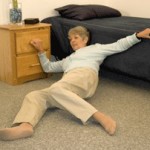
If you are over age 65, having four or more of these risk factors will increase your risk of falling by 80 percent:
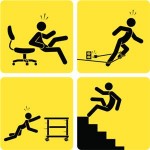


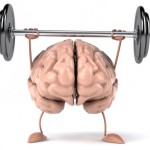
If you see yourself in the above list, be sure to get annual health screenings — doctors’ orders!
Don’t let fear of falling cramp your lifestyle. Use these tips to stay safely upright, Ms. Vanderbilt suggests:
 Taking four or more medications ups your chance of falling down. This includes over-the-counter medicines. Talk to your doctor to see if any can be safely eliminated.
Taking four or more medications ups your chance of falling down. This includes over-the-counter medicines. Talk to your doctor to see if any can be safely eliminated. Wearing specs that aren’t up to snuff is a factor in falls among the elderly. A yearly eye exam will reveal whether your prescription — or your glasses — needs adjusting.
Wearing specs that aren’t up to snuff is a factor in falls among the elderly. A yearly eye exam will reveal whether your prescription — or your glasses — needs adjusting. Most seniors know to skip the heels. But bare-footing it or staying in stockings or socks at home also increases your risk of falls. Look for non-skid footwear, including slipper socks with non-skid treads on the bottom.
Most seniors know to skip the heels. But bare-footing it or staying in stockings or socks at home also increases your risk of falls. Look for non-skid footwear, including slipper socks with non-skid treads on the bottom.



Incorporate exercises that blend muscle strengthening with balance retraining, such as tai chi.

 A strong social network of family and/or friends means fewer falls. If you’re feeling isolated, reach out. Maybe someone is waiting to hear from you!
A strong social network of family and/or friends means fewer falls. If you’re feeling isolated, reach out. Maybe someone is waiting to hear from you!
Preventing a fall is your best bet for remaining active and independent as you age. If you experienced one fall you will face
and mono-phobia as well and you might develop regressive behavior.
في هذا الوقت بدأت صحف الحكومة ( التي يُفترَض انشغالها بالجيش الثالث المحاصر على الجبهة ) تتحدث فجأة عن “صعوبة مناهج الثانوية العامة” ، وإلى هنا فإن الأمر يمكن إبتلاعه إلى حد ما. لكن الأغرب من ذلك أن الموضوع دخل “مجلس الوزراء” فأخذ المجلس يناقش صعوبة مناهج الثانوية العامة ، وكان د.عبدالقادر حاتم يرأس المجلس ، وقرر “تشكيل لجنة وزارية لبحث الموضوع” !
و كان هذا عجيباً ، إذ أن الشكوى من مناهج التعليم العام أمر طبيعي والآراء بين التربويين تتفاوت حول هذا الموضوع ، لكن الطبيعي أن يدور الجدل حول هذا في أروقة الوزارة المختصة : ” وزارة التعليم” . أما أن يجد مجلس الوزراء الوقت لمناقشة مناهج الثانوية العامة بالذات ( وفي عام 1974 بالذات ) عندما كان جمال السادات طالباً بالثانوية العامة . فلا بد أنه كان أكبر من أن يكون “مصادفة سعيدة” !
شُكّلت “اللجنة الوزارية” لبحث هذا الموضوع من د.حسن الشريف وزير التأمينات ود.محمود عبد الحافظ وزير الإسكان ، والدكتور كامل ليلة وزير التعليم الأسبق والمرحوم الأستاذ علي عبد الرازق وزير التربية والتعليم . واستدعيتُ أنا لحضور اجتماعات اللجنة مع أساتذة آخرين من الجامعات ومن رجال الوزارة في مكتب “وزير التأمينات” . و يشهد على هذه الواقعة كثيرون من رجال الجامعات منهم د.صبحي عبدالحكيم ( رئيس مجلس الشورى، فيما بعد ) والذي كان يمثل مادة الجغرافيا ، والدكتور محمد أنيس ، والذي كان يمثل مادة التاريخ ، والدكتور محمد النادي الذي كان يمثل مادة الطبيعة . ولقد قلت للصديق المرحوم د.حسن الشريف ساخراً في التليفون : ” إن العلاقة بين التأمينات ومناهج الثانوية العامة لابد أنها وثيقة ، وإلا ما عقدتم الاجتماع في وزارة التأمينات ” !
ولقد كان واضحاً أن وزير التعليم د. علي عبد الرازق لم يكن راضياً عن هذا العمل ، ولذلك لم يحضر الاجتماع وحضر الدكتور كامل ليلة الاجتماع قرب نهايته ، ودارت المناقشة أساساً بين المستشارين وبين وزيري التأمينات الاجتماعية والإسكان . وكان واضحاً من أول الاجتماع ، أن “مادة الرياضيات” هي المستهدفة ! ولذا دارت مناقشة حادة بيني وبين وزير الإسكان طالت لأكثر من ساعة ، وصممتُ على موقفي برفضي طلب وزير الإسكان بـ” إلغاء كتاب التفاضل والتكامل من مناهج الثانوية العامة” ، والتفت د. محمود عبد الحافظ إلى د. حسن الشريف وقال بالإنجليزية بصوت مسموع : ” لا فائدة .. لا يوجد طريق للتفاهم ” ! وأرسل لي أستاذ جامعي تحت منضدة الاجتماع ورقة سلّمها لي د. صبحي عبد الحكيم ( الذي كان يجلس بجواري ) ، يقول فيها :” كفى .. إنك لن تُقنع هؤلاء الناس بشي أبداً ” وانفّض الاجتماع وأنا على موقفي ورجال الوزارة من أساتذة الرياضيات متضامنون معي في هذا الموقف مقتنعون بالأسباب التي أبديتها في رفض طلب وزير الإسكان .
كان هذا فيما أذكر في يناير 1974 ، وبعدها نسيت الموضوع ، وانشغلتُ بأعمال كثيرة منها وضع امتحان الثانوية العامة لدور يونيو سنة 1974 في الرياضيات ، ومنها الإعداد لسفري إلى بريطانيا لمدة ستة أشهر ( من مايو إلى أكتوبر ) كأستاذ زائر في إحدى جامعات بريطانيا .. حتى كان يوم جمعة خلال شهر مارس 1974 خرجت فيه مع أسرتي لقضاء النهار وتناول الغداء خارج البيت .
وعندما عدنا بعد الظهر أخبرنا الجيران أن سيارة من رئاسة الجمهورية جاءت تسأل عني مرتين ، وأن رجلاً بالسيارة ترك لدى الجيران ورقة لتسليمها لي ، وعندما فتحت الورقة وجدت أنها من مكتب الرئيس ومكتوب عليها بالحبر : ” رجاء الاتصال بأرقام التليفونات …” ثم توقيع غير واضح . وأدرتُ قرص التليفون بأحد هذه الأرقام وقلت :” أنا فلان … ماذا تريدون مني ؟ ” وعرفتُ أن الذي يرد على التليفون هو رجل عرف عن نفسه أنه “العقيد رؤوف” ، وأنه يريد أن يعرف متى يرسلون سيارة من الرئاسة لحضوري إلى منزل الرئيس لأن جمال لديه أسئلة في الرياضيات يريد أن يسألني فيها ؟!
وامتلأت نفسي بالغضب وقلت لمحدثي وأنا أحاول أن أضبط أعصابي : ” إنك لا شك لا تعلم أن أستاذ الجامعة يحال إلى مجلس تأديب إذا أعطى دروساً خاصة “
قال في برود : “لا أعرف ” .
وقلت : ” أنا واثق من ذلك .. وواثق أيضاً أنك لا تعرف أنني واضع امتحان الثانوية العامة” !
قال في برود أيضاً : ” لا .. لا أعرف ” . وأعطيته أحد المدرسين الأوائل بالمدارس الثانوية ليتصلوا به حتى يُجيب على أسئلة جمال السادات في الرياضيات ووضعت السماعة .
لكنني بقيت في ثورة غضب طوال الليل ، وحاولت زوجتي أن تهديء من غضبي ، وفي الصباح ذهبت إلى وزير التعليم د. علي عبد الرازق لأخبره بما حدث ولأعرف منه إن كان على علم بهذه المهزلة أم لا ؟!
لقد كنتُ ومازلت أُكنُ لهذا الرجل محبة ، لسابق معرفتي به ، ولم أكن أتصور أن يكون له صلة بهذا الموضوع . ولقد أثنى الرجل على موقفي ، لكني وجدته يحاول أن يقنعني بالذهاب مرة واحدة إلى منزل السادات لتقييم ” الولد ” كما قال : فأمه منزعجة بسبب حالته ، وهي تخشى عليه من الرسوب في الامتحان ولا تعرف ماذا تصنع ؟!
وفهمتُ من الوزير أنها كثيرة الاتصال به في هذا الموضوع ، وأنه يشعر بحرج شديد .
قلت له : ” لماذا لا ترسل أحد مفتشي الوزارة أو مدرسيها الأوائل لتقييم الولد ، إن كانت المسألة مجرد تقييم . إنني أريد ان أعرف من الذي أعطاهم اسمي بالذات ؟! ” .
قال الوزير : ” إن اسمك موجود على الكتب ، والكل يعرف أنك تزور المدراس كثيراً لمتابعة مشروع الرياضيات المعاصرة الذي بدأ مع اليونسكو” .
وصممتُ على رفض طلب الوزير ، وقد حاول مستخدماً معي حججاً أخرى ، فقد قال : “إن السادات خارج من حرب أكتوبر ، وليس لديه وقت للإشراف على الولد ” !
وضحكتُ وقلت : ” هل تريد أن تقنعني أن السادات لو لم يكن خارجاً من حرب أكتوبر لساعد ابنه في الرياضيات ؟ إنني بصراحة لا أتوقع من وزير التعليم أن يطلب مني هذا الطلب ” .
وانصرفتُ من مكتب الوزير حزيناً وتَمّلكني شعور بأن ما حدث بالأمس ليس إلا المحاولة الثانية ، بعد فشل المحاولة الأولى في اختصار المناهج بشدة على يد اللجنة الوزارية ، وكان أشد ما أحزنني هو الشعور بأن مصر تُدار كعزبة .. وعلى الخولي والتَمّلي والأنفار أن يكونوا في خدمة “السيد صاحب العزبة” ، وأن الحديث عن سيادة القانون هو عبث في عبث !
ولم يمض على هذه الواقعة أكثر من شهر حتى حدث تعديل وزاري و أُخرج د. “علي عبد الرازق” من “وزارة التربية والتعليم” و عُيِّن “د. مصطفى كمال حلمي” مكانه في أبريل 1974 ، وذهبتُ إليه مهنئاً كصديق قديم ، لكنني حكيتُ له القصة بأكملها وسألته إن كان يعرفها، فقال إن هذه أول مرة يسمع بها ، فقلتُ على الفور : ” على أي حال لقد رويتُ لك تلك القصة حتى لا يحاولوا معك “
كان هذا في أبريل 1974 ولم يبقى على امتحان الثانوية العامة المصرية غير شهرين . وقد عرفتُ بعد ذلك أن شخصاً ما تقدم لهم بالحل العبقري .. وهو إخراج ابن السادات من امتحان الثانوية العامة المصري وإدخاله امتحان الثانوية الإنجليزية في يونيو ، حيث لا يوجد امتحان في اللغة العربية ، وحيث “امتحان الرياضيات” هو امتحان الضرب والقسمة ، و لا شيء أكثر !
إلى هنا تنتهي ” شهادة” د. عبد العظيم أنيس ،( شهادة للتاريخ : مجلة وجهات نظر _ العدد 76 _ مايو 2005 _ الصفحة 67 : 69 ) عما كان شاهداً عليه في ” عزبة أنور السادات”، الذي يِطالب وزير إسكانه بلا قطرة خجل بإلغاء مادة “التفاضل و التكامل” من منهاج الرياضيات ، لأن ” النَنّوس” كان لا يفقه أَلِف “التفاضُل” من باء “التكامل”. لكن أنور و جيهان يريدان أن يدرس ابنهما هندسة ” زي إبن عبد الناصر” . فكان ” الباب الخلفي” هو ” إستدعاء واضع أسئلة الإمتحان إلى ” بيت الرئيس” أبو التلميذ الفاشل !
و لما أُغلق هذا الباب بيد ” عِناد الأستاذ الشريف”‘، كان القفز السريع من المركب ” المصري” الغارق ، إلى ما بدا أنه ” قارب نجاة ” متمثلاً في ” الثانوية البريطانية ” ( و هي لا تؤهل لدخول الجامعة في بريطانيا، بل لسوق العمل فقط !) حيث امتحان “الرياضيات” هو “امتحان الضرب والقسمة” !
و هكذا دخل ” جمال أنور السادات” ، ” قسم الهندسة الكيمائية” بكلية هندسة القاهرة . وواجهته مشكلة أكبر و أعمق من مشكلة ” الرياضيات ” في الثانوية العامة ، التي أَمكن التحايل عليها . لكن في الكلية كان يوجَد مَن آثروا السلامة ، فمَرّروا ما لا ينبغي أن يمُر من أُمور لا يصدقها عقل فـ” النَنّوس” كانت نسبة غيابه في سَنَته الجامعية الأولى 100% ، ما يحرمه من دخول الامتحان . إلا أن إدارة الجامعة ( كان يرأسها د . صوفي أبو طالب) استثنت ” إبن الرئيس” وحده ، فحصل على تقدير “جيد” في إحدى المواد التي يتلقى فيها درساً خاصاً ، رغم أن درجته في “أعمال السنة” كانت ” صفراً مُربعاً ” ما يفترض ألا يحصل على أكثر من تقدير “مقبول” .و في السنة الثانية كان ” عبده مشتاق” بدرجة ” أُستاذ جامعي” يقف في لجنة الإمتحان شاهراً مُسدساً بدعوى أنه ” يحمي ابن كبير العائلة” . و رغم ذلك لم يخلُ الأمر من ” شرفاء” ، كان أحدهم هو د . محمد علي صالح رئيس قسم الهندسة الكيمائية ، الذي يدرس فيه ابن السادات . فأثناء أحد الإمتحانات ، مَر رئيس القسم يتفقد الإمتحان ، فلاحظ أُموراً لا ينبغي أن تُترك بدون وقفة حاسمة . و هكذا ضيَّق رئيس القسم على ابن السادات فمنعه من ” الغش” .وكتب إلى ” أبيه” ( الذي تصادف أنه كان يُطلق على نفسه ” الرئيس المؤمن” و يدّعي أنه يؤسس” دولة العلم و الإيمان” ) كتب د. صالح إلى السادات بصفته “ولي أمر طالب ” يدرس بالقسم الذي يترأسه ، وأخبره عن أصفار ابنه طوال العام التي تتحول إلى “إمتياز” بأيدٍ غير خفيّة ، تطعن ” النزاهة الجامعية” في مقتل !
و لهذا السبب وحده ، قام د. صوفي أبو طالب ، ( رئيس جامعة القاهرة ، آنذاك ) ، بإصدار قرار فصل رئيس القسم ، الذي لم يغُص به حلق البيروقراطية المصرية الشهيرة ،فكان قرار الفصل ” مُسبباً ” بإتهام د. صالح بتهمة أقرب إلى الجاسوسية والتخابر ( طبقا لأحكام المادة 83 من قانون الجامعة الخاصة بالتعامل مع دولة أجنبية ومعاداة نظام الحكم ) ! و هكذا وجد الرجل الشريف نفسه خارج جامعته و كليته و قسمه ، موظفاً بوزارة الثقافة . بينما تلقّى “صوفي أبو طالب” مكافأته بأن انتُخب في العام نفسه ( 1975 ) عضواً باللجنة المركزية للإتحاد الاشتراكي ، و في العام التالي نائباً بمجلس الشعب ، قبل أن يتخرج ” النَنّوس” بالغش والتزوير رغم أن نسبة حضوره كانت صفراً ، تحوّل إلى ” بكالوريوس هندسة بتقدير إمتياز ، دفعة مايو 1978 ” و هكذا أنجز “صوفي أبو طالب” مهمته تحت قُبّة جامعة القاهرة ، فغادرها مع ” النَنّوس” ، ليجلس تحت قُبّة أُخرى على سبيل ” مكافأة نهاية الخدمة ” ، فانتُخب رئيساً لـ” مجلس – لمؤاخذة-الشعب”
المهم أنه بعد أن قُتل السادات ، نشرت جريدة “الأهالى” اليسارية ، قصة حصول ” النْنّوس” على بكالوريوس الهندسة عن غير الطريق الشريف ( في تحقيق وافي كتبه ” عاصم حنفي” ، في العدد 64 من الإصدار الثاني ، في ديسمبر 1982 ) . فقام المهندس إبراهيم شكرى ( رئيس حزب العمل ) ، بالتقدُم بما جاء بالجريدة كإستجواب ضد الحكومة فى “مجلس الشعب” ، ( الذي كان يترأسه حينذاك صوفي أبو طالب نفسه ! ) فتَصدّت ” د.سهير القلماوي” عضو المجلس لمهمة الدفاع ، و هكذا إنتهت الجلسة ( كالعادة ) بالعودة لجدول الأعمال.
على أن تفاصيل ” الجريمة” كانت أفدح و أفضح من أن تمُر ، فكتب ” إبراهيم سِعدة” فى جريدة “مايو” لسان حال ” الحزب الوطني ” ( التي كان “سعدة” يترأس تحريرها آنذاك ) مقالاً ساخناً تحت عنوان ” المهزوز” ، شبّه فيه ” صوفي أبو طالب ” بـ” محمود شكوكو” ، طالباً منه بوصفه رئيساً لمجلس الشعب ، و عضواً قيادياً في “الحزب الوطني” الحاكم ، ( و قبل هذا و بعده ” الرئيس المؤقت” الذي توّلى رئاسة الجمهورية ، ثمانية أيام بين مقتل السادات و الاستفتاء على مبارك رئيساً جديداً ) طلب ” سعدة “الرد على ما نشرته ” الأهالي” في تحقيقها الموّثق الكاشف لعورات النظام . ولم يأت رد ” أبو طالب” بالطبع ، بل جاء بدلاً منه قرار إزاحة ” سعدة” من منصبه ، رئيساً لتحرير ” جريدة الحزب الوطني” الذي تولّاه مكانه ” سمير رجب” . و بعد عدة أشهر ( 4 نوڤمبر 1983 ) ، أُطيح بـ” أبو طالب” من رئاسة “مجلس- لمؤاخذة- الشعب” !
ختاماً : إذا أردنا أن نعرف كيف وصلنا إلى ما نحن فيه ، لابد أن نعرف كيف بدأنا ما نحن فيه . فلا توجد نهايات كارثية بدون بدايات كارثية ، أو هكذا
ندّعي !